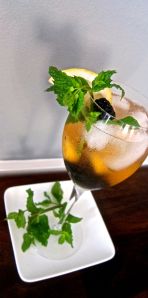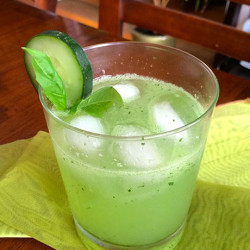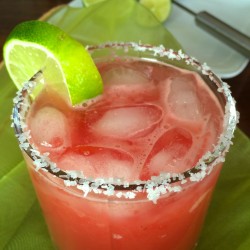Saturday, August 4, 2012
 Looking for the perfect libation for a sultry summer evening? Whether or not served with traditional Spanish tapas, sangria is a light summertime drink that takes advantage of farmers’ market flora. Made with either white or red wine, it celebrates fruit in a way that few other alcoholic drinks do. While I generally prefer red wine sangria to white wine, they’re both delicious and the white wine variant works particularly well in the summer, allowing the pretty colors and lovely flavors of the fruit and herbs to shine.
Looking for the perfect libation for a sultry summer evening? Whether or not served with traditional Spanish tapas, sangria is a light summertime drink that takes advantage of farmers’ market flora. Made with either white or red wine, it celebrates fruit in a way that few other alcoholic drinks do. While I generally prefer red wine sangria to white wine, they’re both delicious and the white wine variant works particularly well in the summer, allowing the pretty colors and lovely flavors of the fruit and herbs to shine.
Summer Sangria
Ingredients
 1 bottle white wine
1 bottle white wine- 2 oz triple sec or other orange liqueur
- 2 oz apricot brandy
- 1 oz St. Germain (optional)
- 2 peaches, chopped
- 1/2 cup blackberries, halved
- 1/2 cup blueberries
- 1/2 lemon, sliced
- Seltzer or sparkling water (optional)
- Mint sprigs (garnish)
Instructions
Chop the peaches and cut the blackberries in half if they are especially large, if you like. Slice the lemon. Place all fruits at the bottom of a pitcher, pour in the all of the alcoholic liquids, and stir gently. Ideally, you will refrigerate the mixture for a few hours to let the flavors come together. To serve, pour over ice and top with ~1 oz of seltzer if desired. Garnish the glass with a lemon slice, mint sprig, and whole blackberry.
Mixologist’s Notes
There are so many recipes for sangria out there from which to choose, and each will yield a slightly different result. Below are a few things to consider if you’re looking around your liquor cabinet and fruit offerings to make it at home.
Selecting Wine. The bottle of wine you use makes a difference. The traditional wine is a Spanish dry white. I actually used French last night only because that’s what I had around; worked just fine. A dry, crisp Sauvingnon blanc also works quite nicely here. Really, any basic table white could work as long as it’s fairly well balanced and on the dry side. What you don’t want is a big oaky chardonnay or an unusual varietal like, say, reisling, gewürztraminer, or anything like that.
Choosing Mixers. The mixers in my recipe are selected to create a lively sangria, rather than a white wine spritzer or white wine-cum-fruit juice drink concoction. In my view, the key is to choose liqueurs that compliment – not overpower – the color and flavors of the wine. For example, whereas I use triple sec in both my white and red wine sangria recipes, I use apricot brandy in the white version and blackberry brandy (or some such) in the red: blackberry brandy would add delicious flavor to the white wine version, but it’s a stronger flavor that will turn the sangria a bit too pink for my taste, whereas the apricot keeps it on the white(r) side and also pairs well with the stone fruit (e.g., peaches). Note: Many sangria recipes call for sugar, but I get my sweetness from the mixers and fruit. If your fruit turns out being less juicy and/or you find yourself puckering later you can always add a bit of super fine sugar or agave nectar but try it my way first.
Fruit Notes. I selected this particular mix for its gorgeous balance of colors, flavor, and texture; it was also what was in season and at the market here in New England. (Not including the lemon, of course.) I’ve used raspberries in the past as well as other stone fruits such as apricots and plums; all are fabulous. I’d use the same fruit mix here in a summer red wine sangria (and use blackberry brandy as aforementioned), by the way, while keeping the some of the more traditional fruits for wintertime (e.g., oranges, apples).
Garnish and Serve. Spoon some fruit into the bottom of the glass then pour the sangria over ice. Top it with a bit of seltzer if desired to add lightness and effervescence. I find the seltzer step optional and do it only when the whim strikes. If you’ve never made sangria before, I recommend tasting it before adding seltzer, which will dilute the flavors and really isn’t necessary. That said, it adds a bit of bubbly that can sometimes be nice. (Don’t add it along with the other liquids then put in the fridge as it will go flat; you need to add it to each glass individually right before serving.) A mint sprig adds a bright herbal note and balances the sweetness. I wouldn’t necessarily add it to the whole mixture before refrigerating, as it’s not a traditional ingredient and could overpower the other flavors. But, hey, it was 90-plus degrees last night, and I thought it worked well. (I’d never done it before, actually.)

Looks pretty, too.




